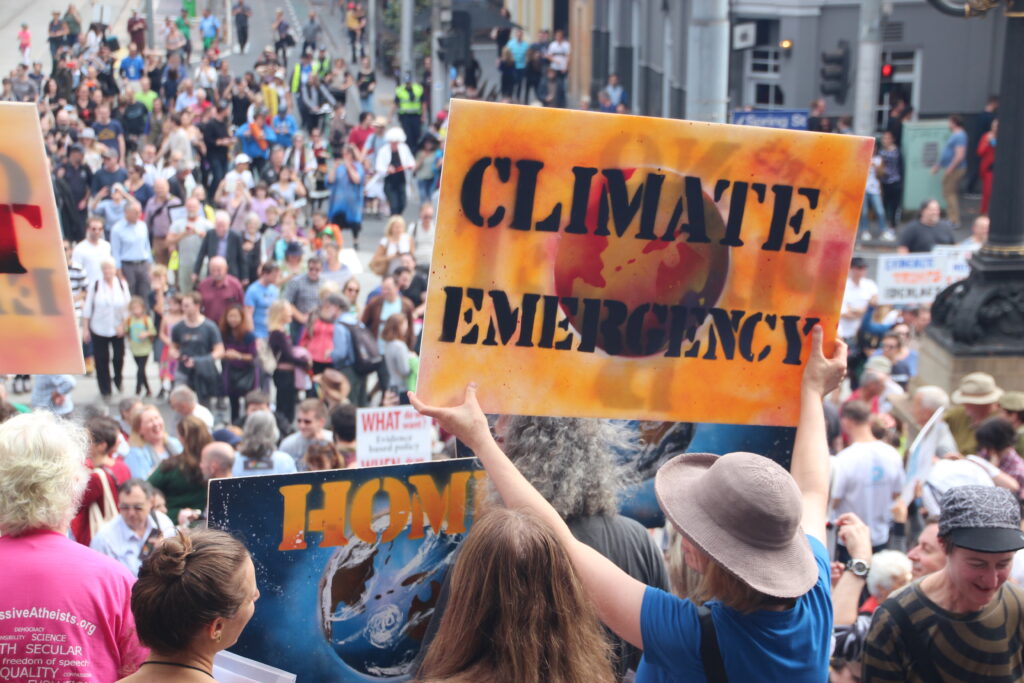The Human Revolution
by Eric McLamb
EP News Features
Just over 200 years have zipped by since humans began to truly command the planet’s resources in ways that have taken humans to unprecedented heights and advances in modern living. That was the dawn of The Industrial Revolution which marked not only the start of society’s prodigious developments in living, business and industry, but also the beginning of humans’ dominance over the global environment.
Human population exploded at this time as a result of improvements in health and living. With seemingly unlimited resources at hand – along with exponentially increasing capability to harvest and use them, human population has grown unabated ever since and with it increased use of natural resources to support it. This is the human side of the Industrial Revolution.
The Revolution of the Modern Human Race
This Human Revolution goes hand in hand with – but is not synonymous with – the Industrial Revolution. While modern humans – scientifically known as Homo sapiens sapiens – began to flourish as a species some 35,000 years ago at about the time Neanderthals became extinct, it would take thousands of years before they collectively developed ways to make power tools that do the work (and ultimately the thinking) much better than they had been physically and mentally capable of.
Quite simply, the Industrial Revolution was the game changer for human life. It paved the way for humans to grow exponentially in numbers under mostly healthy conditions and live in places formerly inhospitable to human life. Humans would be able to live in the harsh climate of Antarctica and even begin to live in orbit thousands of miles above Earth.

In this way, humans began to dominate their environments to support their families, to protect their property, to grow and prosper. As a result, humans are the planet’s dominant species today.
But in the 1960s leading into the 1970s, people began to realize that the unbridled progress enjoyed by society was coming at a price that would negatively affect human living. Air, land and water pollution, deforestation, over-population, starvation, lack of potable water, sanitation and abject poverty began to override the period of sustained economic prosperity the world would begin to see in the 1920s. And while world economic, industrial and technological growth has reached unprecedented heights, the human condition is just as quickly beginning to deteriorate as a result of the effects of the rampant employment of human ingenuity.
Society today generally understands this, but full acceptance of it still has a way to go. We began to understand the downside of how we attained such prosperity after we passed the point of commercial no return. In other words, human society built prosperity on resources that we now realize will one day no longer be there – like fossil fuels – and renewable resources will be needed to replace them. At the same time progress in creating, maintaining and sustaining healthy conditions for living and survival must accompany these efforts.
Yet, while the mechanism for true and needed change is not that near at hand, the vision of younger generations is making this understanding integral to all aspects of living and business.
Now we have to retrofit what we have built around the right use of resources and decisions governing human consumption and development at all levels if the Human Revolution is to succeed. This is doable, but society is still too reluctant to embrace such a new world because there is collectively not enough motivation.
Logically, people know and understand that the energy from the sun alone can provide all of the world’s power needs… but there is not enough motivation as yet to aggressively move in that direction. Fossil fuels are too easy and extremely lucrative so much to the extent that they control the world’s economy. They fueled the Industrial Revolution and they still provide the vast majority of today’s power needs.
Before the Industrial Revolution men used machines which neither caused pollution nor depleted finite natural resources. The two primary resources then were wind and water… not to mention pure muscle power.
When Things are Worst, People Are at Their Best
History has demonstrated time and again that people always do what is needed to survive. When things are at their worst, people can be at their best. But that should be of no solace if that is what it will take to for the human species to survive within a naturally healthy global environment.
Man understood the vital importance of its natural environment in the early days of the Industrial Revolution when the first Arbor Day was held to celebrate and plant trees as vital to living, health and hygiene, and beautification. This started in Spain in 1805 without the prescience of the impending impact of the Industrial Revolution and has grown in greater importance and popularity around the world ever since.
Earth Day… Catalyst for Human Change
But Earth Day would be born during the time when society began to understand the magnitude of environmental degradation from human activity and environmental dominance. Earth Day started out in 1970 as a National Teach-in Day in the United States and has grown into a marked international celebration and observation of the relationship between humans and their planet home. Today it is celebrated, actively observed and coordinated by 192 countries through the Earth Day Network.
Earth Day can become the catalyst for human change of the scale that can effectively and constructively sync the Human Revolution with the trajectory the Industrial Revolution has given human. But it has to be more than just one day of ecological and environmental cognizance and celebration. It can make Earth serious business on the personal, professional, technological, commercial and political levels every day, and yes, make it as fascinating and compelling as it is necessary and vital in order to bring about the critical mass of change needed.

It is known that a number of things can bring an end to human life as we know it just as quickly as it has evolved. Anywhere from antibiotic resistant superbugs, nuclear attack and an impact by a massive asteroid or coronal mass ejection from the sun could be the event that brings humankind to the precipice of life and death when only such change can be made. That time does not have to come. Earth Day can be the catalyst.
Eric McLamb is a 40-year veteran of educational, environmental and entertainment media. He has extensive experience in environmental journalism – including myriad articles published online and in textbooks and has closely worked with such pioneers as The Cousteau Society, National Geographic, National Audubon Society and National Wildlife Federation as well as the television empires of Turner Broadcasting System and Discovery Communications. He is the founder of Ecology Prime Media.
